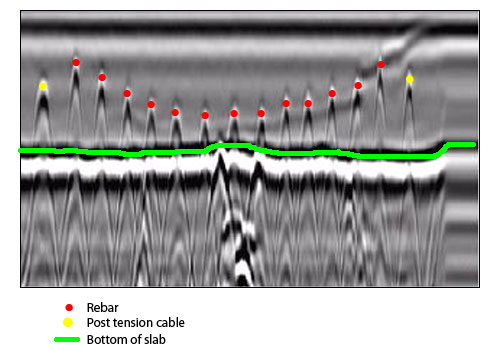Advanced Concrete Scanning Techniques: Making Certain Structural Stability
Reveal the Transformative Power of Concrete Scanning in Taking Full Advantage Of Efficiency and Security
Concrete scanning has emerged as a crucial device in the building and construction sector, offering exceptional advantages in improving job performance and making certain safety and security standards. The transformative power of concrete scanning exists in its ability to offer comprehensive understandings and real-time data, changing just how jobs are prepared and carried out.
Value of Concrete Scanning
Making sure the architectural stability and safety of building tasks starts with the essential action of conducting thorough concrete scanning. Concrete scanning is a non-destructive approach used to find and map subsurface elements within concrete frameworks.
In addition, concrete scanning helps in optimizing project timelines and budget by avoiding unexpected prices and delays that might emerge due to unforeseen obstructions within the concrete. Inevitably, spending in detailed concrete scanning is an aggressive strategy that improves both efficiency and security in building projects.
How Concrete Scanning Functions
Concrete scanning operates as an essential device in building and construction jobs by using sophisticated technologies to find and map subsurface aspects without causing architectural damage. Ground Passing Through Radar (GPR) and Electromagnetic Induction (EMI) are two key approaches used in concrete scanning.
During the scanning process, the data gathered is assessed in real-time, allowing instant recognition of possible hazards or obstacles below the surface. By utilizing these sophisticated modern technologies, concrete scanning considerably minimizes the threat of costly damages and injuries on building sites.
Benefits of Concrete Scanning
Making use of sophisticated scanning modern technologies in construction projects offers a wide range of benefits, improving both effectiveness and security on-site. One of the main benefits of concrete scanning is the ability to discover and find embedded objects such as rebar, post-tension cables, and avenues accurately. By identifying these elements prior to exploration or reducing right into concrete structures, the threat of accidental strikes is substantially minimized, avoiding prospective injuries to workers and damages to the framework itself. Concrete scanning aids in preparation and developing more properly, as it supplies precise details concerning the place and depth of architectural components.

Study: Concrete Scanning Success

In another situation, a building and construction firm utilized 3D concrete scanning to examine the problem of aging concrete frameworks in a historic structure. The in-depth scans provided valuable insights into the level of wear and tear and assisted focus on maintenance efforts effectively. By proactively resolving areas of issue recognized via scanning, the company was able to expand the lifespan of the structure and make sure owner safety.
These situation researches underscore the transformative power of concrete scanning in improving efficiency, accuracy, and safety and security in building projects.
Carrying Out Concrete Scanning in Projects
Applying innovative scanning technologies during construction jobs has actually ended up being significantly important for enhancing precision and safety. By integrating concrete scanning into project preparation and implementation, building teams can determine potential risks, such as rebar or post-tension cable televisions, concealed within concrete structures. This positive technique lessens the danger of mishaps, hold-ups, and costly rework, ultimately resulting in more efficient task timelines and spending plans.
To apply concrete scanning properly, task managers should team up very closely with knowledgeable scanning specialists to figure out the most suitable scanning strategies for the details job requirements. Engaging scanning specialists from the beginning of a task allows the team to produce extensive scanning plans that resolve crucial areas of concern and ensure complete data collection.
Moreover, including concrete scanning into regular project workflows can enhance decision-making processes, as real-time check information provides instant insights into the problem of concrete structures - Concrete why not check here Scanning. This data-driven approach assists in informed problem-solving and allows groups to make modifications without delay, promoting a society of efficiency and security throughout the task lifecycle

Conclusion
Finally, concrete scanning plays a vital duty in enhancing effectiveness and safety and security in construction projects. By using advanced innovation to map and spot out underlying structures within concrete, this process assists to stop expensive errors, make sure architectural honesty, and minimize risks on site. With the capability to discover hidden components and offer accurate information, concrete scanning shows to be a useful device for enhancing job end results and making the most of general success.
Concrete scanning is a non-destructive technique utilized to identify and map subsurface components within concrete frameworks. Furthermore, concrete scanning helps in optimizing task timelines and spending plan by staying clear of unanticipated prices and hold-ups that might emerge due to unforeseen blockages within the concrete. One remarkable instance research study includes a large improvement job where concrete scanning played a crucial duty in making certain job success.In one more situation, a building business used 3D concrete scanning to evaluate the condition of maturing concrete frameworks in more tips here a historic structure. By incorporating concrete scanning right into project preparation and execution, construction groups can determine prospective hazards, such as rebar or post-tension wires, hidden within concrete frameworks.